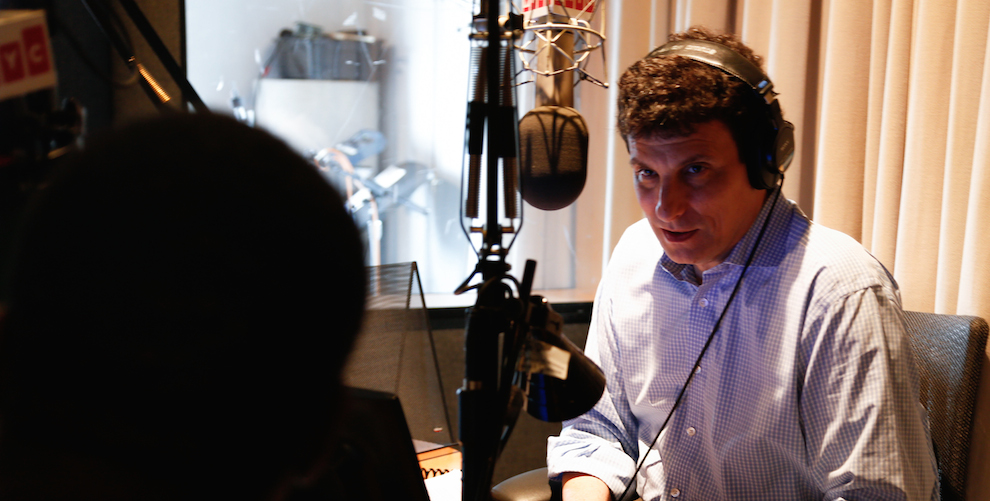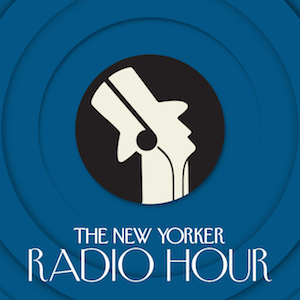
The New Yorker has spent 90 years trying to perfect its formula for making a magazine. There’s voice and perspective, but also no small amount of style. It’s Talk of the Town, typefaces, and Eustace Tilley.
“When The New Yorker started, they didn’t nail it on week one,” editor David Remnick told me.
The magazine is now facing a similar situation as it tries to transition into a new format: audio. The New Yorker Radio Hour debuts tomorrow to terrestrial audiences in cities like New York and Boston and to the wider world as a podcast. But what does The New Yorker sound like? While he’s open to experimenting with the form, Remnick knows at least one thing the new show won’t be: “The most foolish or arrogant thing we could do is get on the air and read New Yorker pieces,” he said.Instead, Remnick expects a process closer to cooking: “All the elements of the crazy recipe of The New Yorker should be in there. The basics: There should be depth of discussion, depth of reporting, accuracy, humor, and range,” Remnick said.
The New Yorker is not unfamiliar with podcasts; the magazine has a handful of shows dedicated to politics, culture, and fiction, among others. But The New Yorker Radio Hour will be a hybrid of sorts, coproduced by WNYC Studios and distributed to public radio stations around the country. In the first two weeks, the show will debut on 26 stations, from New England to Portland.
 In collaborating, the magazine and the radio station are trying to combine elements that regular readers of The New Yorker will recognize with new offerings. Remnick will be hosting each week’s episode; in the premiere episode, he sits down for a discussion with The Atlantic’s Ta-Nehisi Coates. Cartoonists Matthew Diffee and Drew Dernavich will discuss the process of how they create their work each week.
In collaborating, the magazine and the radio station are trying to combine elements that regular readers of The New Yorker will recognize with new offerings. Remnick will be hosting each week’s episode; in the premiere episode, he sits down for a discussion with The Atlantic’s Ta-Nehisi Coates. Cartoonists Matthew Diffee and Drew Dernavich will discuss the process of how they create their work each week.
The first episode also features the initial installment of a narrative piece from Jill Lepore about her search to find her best friend’s biological father.
In discovering what The New Yorker is as a radio show, the staff will be the connective thread between the two worlds. “We’re trying to learn the medium,” Remnick said. “The New Yorker is what we do and we’re learning how to do this thing together and merge these different skills.”
That’s where WNYC Studios, the station’s recently created podcast unit, comes into play. More than a home to new podcasts, WNYC Studios is meant to be a place to develop programming that fits on airwaves and in earbuds. Using the knowledge that comes from creating and, more recently, distributing shows like Radiolab and On the Media, WNYC wants to provide a launchpad for audio producers, said Dean Cappello, head of WNYC Studios.
“This is probably the most enthusiastic reception we’ve received to anything we’ve done. It’s a credit to the regard people have for The New Yorker,” said Cappello.
Breaking into the weekend schedule on public radio is not an easy thing to do. For many stations, shows like Wait Wait…Don’t Tell Me, This American Life, and The Best of Car Talk are still the foundation of Saturdays and Sundays.Cappello said public radio listeners are looking for more great shows, either on radio or on demand. The New Yorker, which can alternate between serious and satirical in a single issue, has many of the elements necessary to create the type of show that people want to listen to on weekends, he said. Combine that with the magazine’s name recognition and audience (which, it’s fair to say, overlaps with NPR’s), and you have a good base for a show.
“There’s a natural affinity between what The New Yorker does and what public radio does,” Cappello said.
In developing the show, there were some practical considerations. Even though The New Yorker and WNYC’s offices are not that far from each other, shuttling back and forth to record episodes would have been annoying. Instead, engineers from WNYC set up an audio studio with broadcast-quality equipment at the magazine’s offices in Condé Nast’s new 1 World Trade Center headquarters.
Getting those details right was relatively easy, but finding the right tone for the show was more of a challenge, David Krasnow, executive producer of The New Yorker Radio Hour, told me. While the show may include stories connected to the news, it won’t exactly be a news program. Instead, Krasnow said, it’s about finding the small, audio-friendly window into what may be a 10,000-word magazine story. Think interviews and personal narratives more than than long-format audio stories.
What the magazine provides in editorial variety each week, the show will aim for in a mix of interviews, personalities, and voices. “We talked about it as being inspired from the magazine, rather than listening to the magazine,” he said.
Krasnow and the rest of the producing team are working with Remnick and other editors to identify stories in the editing pipeline, or from previous issues, that might be a good fit for radio. But they’re also on the lookout for pieces that were an odd fit for the magazine or the website. Lepore’s feature in the first episode grew out of a memo she sent to her editor about an idea she’d had that wasn’t quite right for the magazine.
The producers are also trying to bring the literal tone of the magazine into the podcast, by incorporating actual everyday sounds: side conversations, phone calls, the uneven drumming of typing. “We developed a soundscape that is built from recordings taken here in the office,” Krasnow said.
The New Yorker Radio Hour is WNYC Studio’s first test as it enters an increasingly competitive market for podcasts. The studio is not just going up against NPR, which has recently launched new shows like Invisibilia and Hidden Brain, but also companies and networks like Panoply, Acast, Radiotopia, and Earwolf. That competition, as well as the growing appetite for on-demand listening, is why WNYC wanted to create a division that focused entirely on podcasts. But having a separate division also allows for more flexibility in setting the advertising around shows that will live on public radio and as podcasts. While there are clear guidelines that restrict the types of marketing done over public radio, there are no corresponding rules for public radio podcasts. That’s a challenge and an opportunity for shows that exist in both realms.Advertisers that already have a relationship with The New Yorker may also be interested in radio, Cappello said. And as WNYC finds new ways to deliver ads on The New Yorker Radio Hour, those ideas could also end up being used in other shows from the studio.
“There’s no shame in trying to leverage the dollars available and plow them back into our productions,” he said. But, despite the experimentation, WNYC will remain mindful of how sponsorships align between the radio and digital versions of the show, and whether that presents any conflicts.
Similarly, for The New Yorker, the radio show is part of the magazine’s continuing experiments and reinvention. In the past few years, it’s relaunched its website and seen subscriber growth after introducing a paywall. It’s built out a successful events business and turned The New Yorker Festival into its own franchise. In February, Amazon gave a full series order to The New Yorker Presents, a documentary-style series based on the magazine.
All these efforts have a similar, straightforward goal, Remnick says: “To reach new people. To reach more people, and to reach the people who already read us in different ways.” And while all of these projects seem to be unfolding at the same time, Remnick is cautious, noting that it takes time to learn any new medium. It was the same when The New Yorker first went online, and when it first went into print.
“This used to be an institution that put out a print magazine once a week. And that was interesting and complicated enough,” Remnick said.